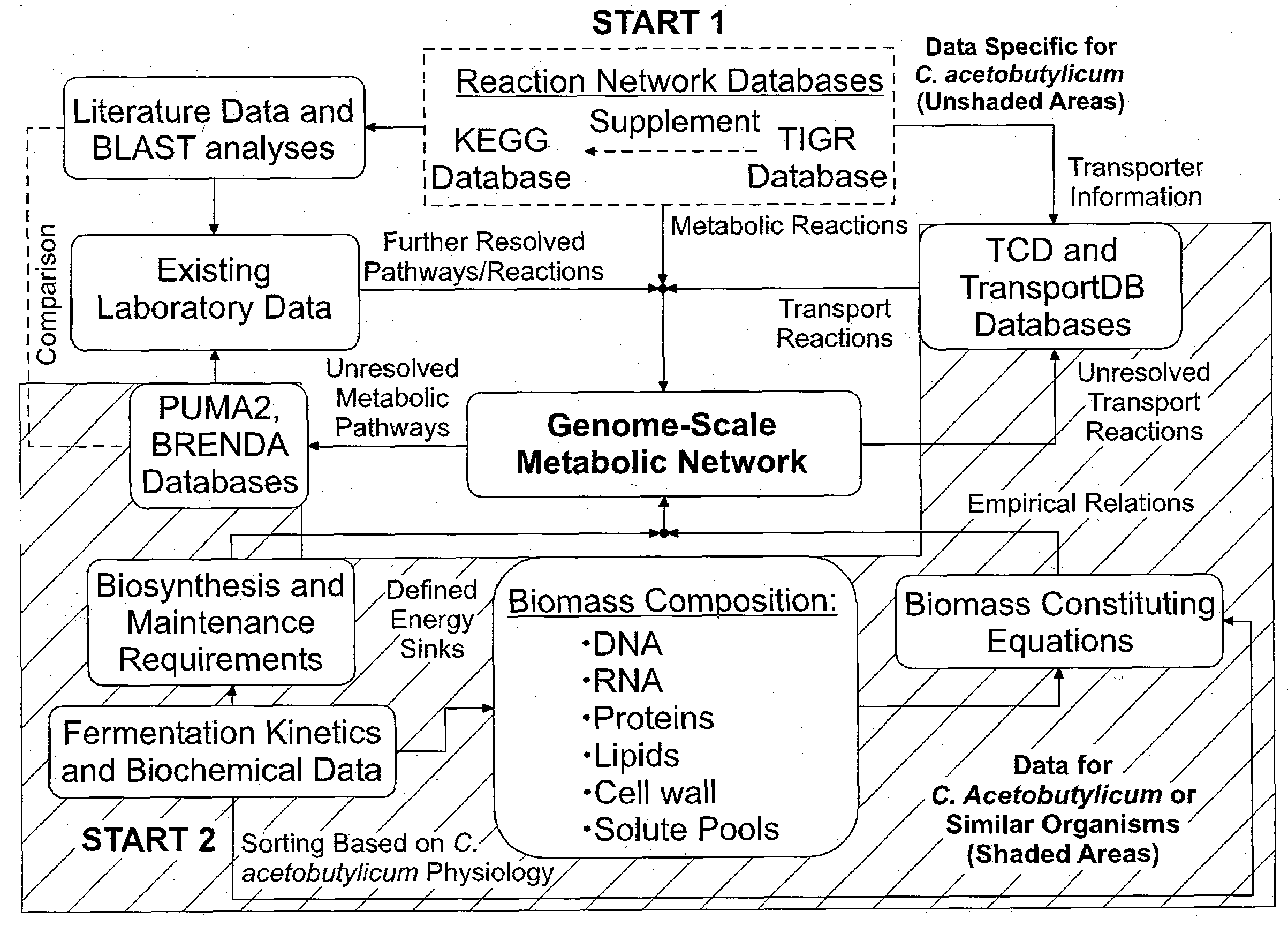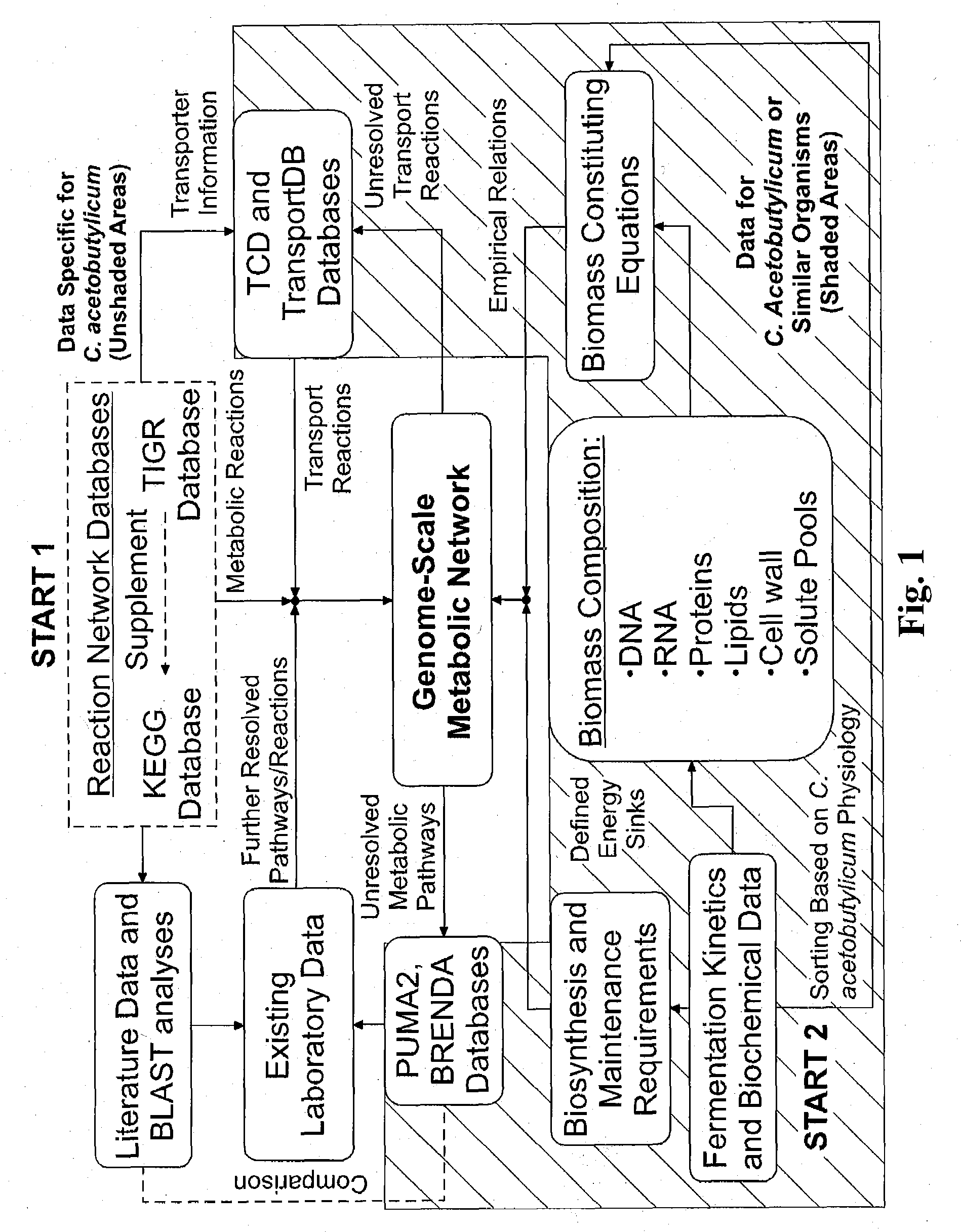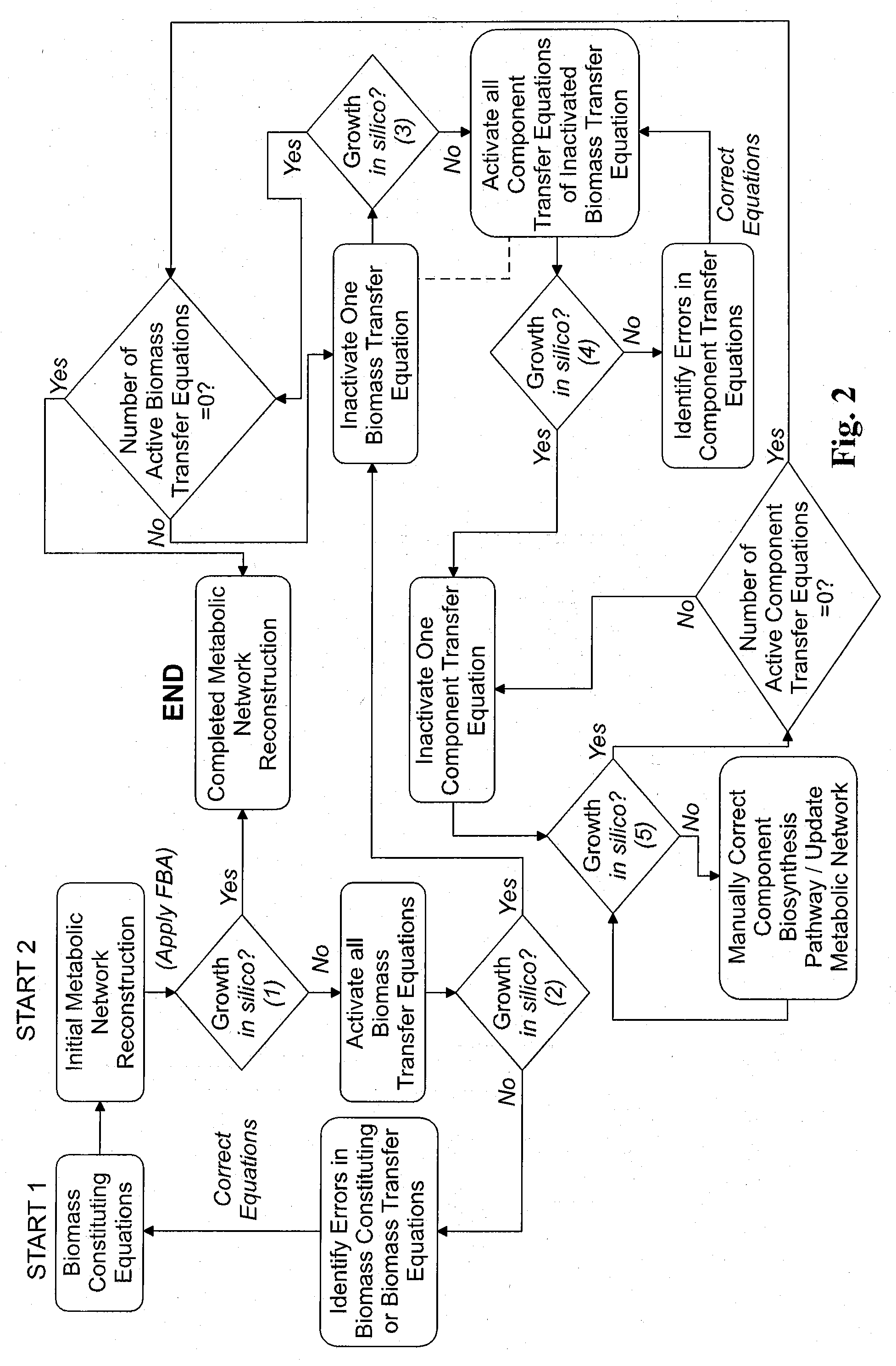Reverse engineering genome-scale metabolic network reconstructions for organisms with incomplete genome annotation and developing constraints using proton flux states and numerically-determined sub-systems
a genome annotation and genome-scale technology, applied in the field of reverse engineering genome-scale metabolic network reconstructions for organisms with incomplete genome annotation and developing, can solve the problems of internal cycling of isolated pathways within the metabolic network, non-functional metabolic network, and inability to calculate the metabolic flux profile, so as to reduce the number of available solutions
- Summary
- Abstract
- Description
- Claims
- Application Information
AI Technical Summary
Benefits of technology
Problems solved by technology
Method used
Image
Examples
example 1
Genome-Scale Metabolic Network Reconstruction for C. acetobutylicum
[0134]The genome-scale metabolic model for C. acetobutylicum was derived from mass balances given all known or predicted intracellular metabolic and membrane transport reactions as well as empirical relations for biomass composition. The pseudo-steady state assumption was assumed for all mass balances, resulting in a system of linear equations (Edwards et al. 1999; Papoutsakis 1984). Prediction of metabolic reactions or transport processes were based on the annotated genome (Nolling et al. 2001) in conjunction with accumulated physiological data. The reconstruction of the metabolic network and integration of these pathways to simulate cell growth in silico was divided into the following separate processes: (i) building metabolic pathways and membrane transport reactions based on genomic annotation, enzyme homology and experimental observations; (ii) developing biomass constituting equations based on physiological da...
example 2
The Stoichiometric Matrix and Constraints
[0138]The resulting composite equation, S·ν=0, consisted of a two-dimensional stoichiometric matrix, S, and a vector, v, of all intracellular and membrane transport fluxes. Integration of transport reaction fluxes into the stoichiometric matrix of a metabolic model was published (Edwards et al. 2001). Constraints, in the form αi≦νi≦βi were applied to all components of the flux vector. A constraint for irreversibility consisted of setting αi or βi to zero (depending on the reaction-flux direction) while setting the opposite constraint near infinity. The flux vector was optimized through linear programming, a technique commonly referred to as flux balance analysis (FBA) (Edwards et al. 1999; Papoutsakis 1984). The objective function used in the optimization algorithm was to maximize the specific growth rate. The stoichiometric matrix was constructed in MATLAB (The Mathworks, Inc.; Natick, Mass.). Constrained optimization by linear programming w...
example 3
Identification of Metabolic Pathways and Transporters
[0139]The iterative metabolic pathway construction procedure is summarized in FIG. 1. The procedure was initiated with data mining of metabolic pathways specific to C. acetobutylicum contained in the Kyoto Encyclopedia of Genes and Genomes (KEGG) (Kanehisa and Goto 2000), the GenomeNet (Kanehisa et al. 2002), MetaCyc (Caspi et al. 2006) and the Comprehensive Microbial Resource (CMR) (Peterson et al. 2001) at The Institute for Genomic Research (TIGR) (http: / / www.tigr.org / ). This set of metabolic reactions was further supplemented with metabolite transport reactions obtained from the Transport Classification Database (TCD) (Busch and Saier 2002; Saier et al. 2006) and TransportDB (Ren et al. 2007). Unresolved metabolic pathways were identified through reverse engineering of metabolic network reconstruction (discussed below). Additional metabolic and transport reactions were identified through the PUMA2 database (Maltsev et al. 2006)...
PUM
 Login to View More
Login to View More Abstract
Description
Claims
Application Information
 Login to View More
Login to View More - R&D
- Intellectual Property
- Life Sciences
- Materials
- Tech Scout
- Unparalleled Data Quality
- Higher Quality Content
- 60% Fewer Hallucinations
Browse by: Latest US Patents, China's latest patents, Technical Efficacy Thesaurus, Application Domain, Technology Topic, Popular Technical Reports.
© 2025 PatSnap. All rights reserved.Legal|Privacy policy|Modern Slavery Act Transparency Statement|Sitemap|About US| Contact US: help@patsnap.com



